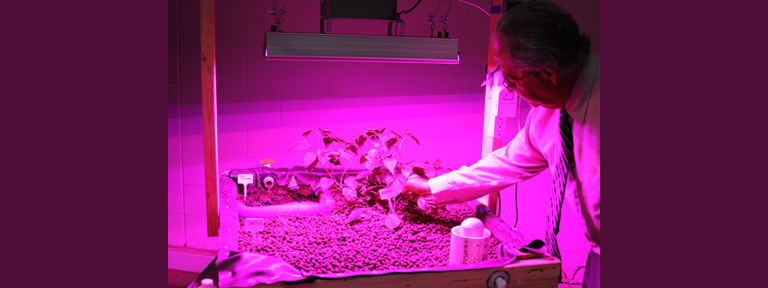
“It’s giving the Flint community new knowledge and new food options.”
More than 50 Kettering University students in a variety of majors have been involved in aquaponics-related projects aimed at creating access to sustainable fresh food sources in the city of Flint over the past two years.
The initial project, supported by a $25,000 grant from the Ford College Community Challenge grant and done in partnership with Metro Community Development, provided engineering plans for the creation of an aquaponics facility in a warehouse in Metro’s building, overseen by students in their YouthBuild program. Multiple Kettering students worked on the plans as part of their thesis project, and one student -- Jeanette Smith ‘15 -- won Kettering’s Outstanding Thesis award for her portion of the project.
“This was a community partnership,” said Dr. Matthew Sanders, Industrial Engineering faculty member. “Our students wrote a plan for how to build the facility. That included a cost analysis, feasibility studies, suggested crops and fish that would thrive in the facility and have worked on technical aspects.”
Students in Mechanical Engineering, Industrial Engineering, Chemical Engineering, Electrical and Computer Engineering (ECE), and chemistry have been involved in the project through Kettering’s interdisciplinary capstone course. Sanders and Dr. Mark Thompson, ECE faculty member, have served as advisors. Although one aspect of the project that benefits the community is the immediate access to fresh food the technology provides in a city where portions of the population live in “food deserts,” Sanders also notes that longer term, even greater community benefits are possible.
“This isn’t just a simple aquaponics project,” Sanders said. “We want to take it to the next level. Anyone can build a small aquaponics environment. But as Kettering students and faculty, we can develop further technology. We want to be able to develop an app, to be able to control these environments from distance and take the next step in scaling up these types of facilities.”
The fact that students from multidisciplinary backgrounds have been involved has also benefitted the project.
“This isn’t just a mechanical engineer providing a CAD drawing for someone to build,” said Mouli Venkatesan, a research assistant at Kettering University who has worked on the project. “It’s multidisciplinary, so we have Mechanical Engineering students working on structural issues, Electrical Engineering students working with sensors, Computer Engineering students working with programming and software. It gives us more possibilities to make an impact with this project.”
Students have examined everything from the volume of water needed to pump selection to food needs of the fish to natural light needs, among other requirements. Thomas Pawlicki ‘16 is currently working on lighting components as part of his thesis.
There are plans to continue to build on this project in summer and fall capstone courses. Students in Kettering’s Innovation-to-Entrepreneurship (i2e) course of study also have the option of participating in aspects of the project or contributing ideas to expand the technology. Students in Kettering’s Student Association of Global Engineering (SAGE) group is also working on aquaponics-related projects in the Flint community, including turning remaining foundations of demolished homes into self-contained aquaponics facilities by building hoop houses over them.
“This technology is not elite,” Sanders said. “The beauty of it is it can become even bigger and spread because anyone can learn how to do it. People learn to raise and grow food themselves throughout the year. It’s giving the Flint community new knowledge and new food options.”